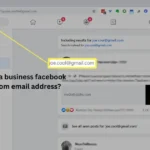Imagine you’re about to buy something online, and you need to pay for it. You grab your phone, ready to make the payment, but then you realize you need your bank account number.
You know it’s a long number with 16 digits, but where do you find it? Don’t worry, it happens to everyone! This article will show you exactly how to find your 16 digit JK Bank account number. We’ll look at all the different places you might find it, so you can get back to buying that awesome thing you want!
Easy Ways to Find Your JK Bank Account Number
There are many ways to find your JK Bank account number. Let’s look at some of the most common and easiest methods:
Check Your Passbook
- Your JK Bank passbook is like a special notebook that keeps track of all the money going in and out of your account.
- Open your passbook and look at the first page. You should see your 16 digit account number printed there along with your name and other details.
Look at Your Checkbook
- If you have a checkbook from JK Bank, open it up and take out one of the checks.
- At the bottom of the check, you’ll see three sets of numbers. Your 16 digit account number is usually the middle set of numbers.
Use JK Bank Net Banking
- If you use JK Bank Net Banking to check your account online, you can easily find your account number there.
- Log in to your JK Bank Net Banking account.
- Go to the “Accounts” or “Account Summary” section. The exact name might be a little different, but it will be a section that shows you information about your account.
- Your 16 digit account number will be displayed on this page. You might see it labeled as “Account Number” or something similar.
Use the JK Bank Mobile App
- If you have the JK Bank mobile app on your phone, you can use it to find your account number too!
- Open the JK Bank mobile app and log in to your account.
- Look for a section called “Accounts” or “My Accounts.” This is where you’ll find information about your bank accounts.
- Tap on the account for which you need the number.
- Your 16 digit account number will be shown on the screen.
Visit a JK Bank Branch
- If you’re having trouble finding your account number using the methods above, or if you prefer to talk to someone in person, you can always visit your nearest JK Bank branch.
- Bring a photo ID like your Aadhaar card or driver’s license to prove who you are.
- A bank employee will be able to help you find your account number.
Understanding Your JK Bank Account Number
Your JK Bank account number is a unique 16-digit number that is specific to your account.2 It helps the bank identify your account and make sure that your transactions are processed correctly.
Here’s what the different parts of your JK Bank account number might represent:
| Digits | Possible Meaning |
|---|---|
| First 4 Digits | Bank branch code |
| Next 2 Digits | Type of account (savings, current, etc.) |
| Remaining 10 Digits | Unique customer identification number |
Note: The exact structure of your account number might vary slightly.
Tips for Keeping Your Account Number Safe
- Never share your account number with anyone you don’t trust.
- Be careful when using your account number online. Only enter it on secure websites (look for the padlock symbol in the address bar).
- If you lose your passbook or checkbook, report it to JK Bank immediately.
How to Find Your 16 Digit JK Bank Account Number Offline
Sometimes you might not have access to the internet or your mobile phone. Here are some ways to find your account number offline:
Contact JK Bank Customer Care
- You can call the JK Bank customer care helpline.
- Keep your customer ID or other identifying information handy.
- After verifying your identity, they can help you find your account number.
Visit a JK Bank ATM
- While you can’t directly see your full account number on an ATM screen, you can use it to get a mini statement.
- Insert your debit card and enter your PIN.
- Select the “Mini Statement” option.
- The mini statement will usually show the last few digits of your account number. This can be helpful if you remember most of the number and just need to confirm the last few digits.
What to Do If You Can’t Find Your 16 Digit JK Bank Account Number
If you’ve tried all the methods above and you still can’t find your 16 digit JK Bank account number, don’t panic! Here’s what you can do:
- Gather any documents you have related to your account. This could include old bank statements, deposit slips, or loan documents.
- Visit your nearest JK Bank branch. Explain the situation to a bank employee and provide any documents you have.
- Be prepared to verify your identity. You’ll likely need to show a photo ID and answer some security questions.
- The bank staff will assist you in retrieving your account number.
Summary
Finding your 16 digit JK Bank account number is usually a simple process. You can often find it in your passbook, checkbook, or by using JK Bank Net Banking or the mobile app. If you’re having trouble, you can always visit a JK Bank branch for assistance. Remember to keep your account number safe and never share it with anyone you don’t trust.
FAQs
Can I find my JK Bank account number on my debit card?
No, your full 16 digit JK Bank account number is not printed on your debit card.
Is my JK Bank customer ID the same as my account number?
No, your customer ID and account number are different. Your customer ID is a unique number that identifies you as a customer of JK Bank, while your account number is specific to your individual account.
What should I do if I suspect fraudulent activity in my JK Bank account?
If you suspect any unauthorized transactions or fraudulent activity in your account, report it to JK Bank immediately by calling their customer care helpline or visiting your nearest branch.
Can I change my JK Bank account number?
Generally, you cannot change your bank account number. If you have a specific reason for needing a new account number, you may need to close your existing account and open a new one.
Can I use my JK Bank account number for transactions at other banks?
Yes, you can use your JK Bank account number for transactions at other banks, such as for making NEFT or RTGS transfers.







